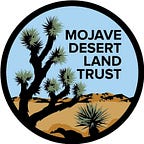This post was updated on 10/04/19
Action alert! Developers want to build a city in the heart of protected land
The Paradise Valley project would add thousands of homes next to Joshua Tree National Park. This pristine wildlife corridor is no place for a new city.
This is the proposed site of the Paradise Valley housing development, where 8,490 housing units and 1,800 acres of land for commercial space are planned along the southern border of Joshua Tree National Park, in a pristine desert area called Shavers Valley. Shavers Valley is known for its dark night skies, biodiversity, wildlife, and incredible views.
The new city would bring as many as 25,000 new residents, along with retail spaces and warehouses, to this valley. This development would cause devastating impacts to Joshua Tree National Park and to the wilderness areas bordering the proposed development site. The site sits next to Joshua Tree’s Cottonwood Mountains, which provide some of the best stargazing in all of California. In fact, in 2017, the park was officially designated as a Dark Sky Park by the International Dark Sky Association — and because the park’s south entrance is so remote and undeveloped, it is the best spot in the park for stargazing.
To the south, the Mecca Hills Wilderness area, Painted Hills, and Orocopia Mountains would also be impacted by the urbanization.
The proposed city is situated along several desert washes that converge into the Pinkham Wash. To prepare this site for development would require paving over the washes to clear the site. Not only would this have impacts on the ecology of this area and create excess runoff; it also means this development is in a flood-prone area. In an era when we are preparing for climate change impacts by updating flood zoning maps and rethinking where homes should be sited, why is a new city being proposed in a desert wash that is prone to flooding?
This proposed development is also not aligned with the local Multiple Species Habitat Conservation Plan. The Shavers Valley is prime habitat for the threatened desert tortoise and LeConte’s thrasher, and it is home to several other species and a network of wildlife corridors for migrating animals like the desert bighorn sheep. It would also interfere with the US Fish & Wildlife Service’s plan to re-introduce the Sonoran pronghorn sheep to this area.
And in an era when housing affordability is at crisis levels, these expensive luxury homes will not address the need for housing that the average family can afford.
The project, first proposed in 2004, has long been the subject of debate and controversy. Because of that, it failed to get off the ground in its first go-around over 10 years ago. But now, the development company, GLC Enterprises, is proposing this troubled project yet again.
Latest developments
Riverside County Planning Commissioners voted 4–1 on August 21, 2019 to recommend that the Board of Supervisors deny plans for the project. This after Riverside County Planning Department staff weighed in on the project for the first time with a recommendation that the Planning Commission deny the project or take it off the calendar.
The project is expected to go before Riverside County’s Board of Supervisors on November 5, 2019. You can make your voice heard by attending the public hearing at 9.30am at Riverside County Building, Board of Supervisor Chambers, 1st Floor, 4080 Lemon St, Riverside, CA.
At any time and no matter where you live, you can contact the project planner, Russell Brady, at (951) 955–3025, or rbrady@rivco.org, or email the 4th District representative, V. Manuel Perez at district4@rivco.org, and explain why you value Joshua Tree National Park’s dark skies and clean air, and the pristine desert and wildlife habitat provided by the park’s south entrance and the Shavers Valley.
Here are some talking points …
Threats posed by the Paradise Valley project:
- Around 5,000 acres of prime desert tortoise habitat will be lost.
- Habitat on the park’s southern boundary will be physically damaged.
- Ancient groundwater will be pumped from the Orocopia basin.
- Invasive plant and animal species will be introduced.
- Joshua Tree National Park’s dark night skies will be affected by hundreds of thousands of new sources of artificial light.
- Biological connectivity between the park and other major conservation areas like the Mecca Hills Wilderness will be blocked.
Read more about the development plans here.
Follow our campaign here.
